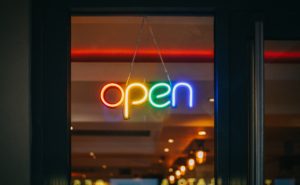 OPEN has become an adjective used with a myriad of terms beginning with access and joined by communications, data, source—and open research/science, which is the focus of this column. What was most interesting as I went about my gatherings was the number of articles about “open (fill in the blank)” that were not accessible without a personal or institutional subscription or the willingness of the reader to pay on demand for a download (a.k.a., pay per view, or PPV). As always, only openly accessible references are included here. Further investigation on the reader’s part using search terms such as “open research” and “open science” will uncover many more articles, but most of those will come at a price. So, it begs the question whether research/science is really open now … or will it ever be?
OPEN has become an adjective used with a myriad of terms beginning with access and joined by communications, data, source—and open research/science, which is the focus of this column. What was most interesting as I went about my gatherings was the number of articles about “open (fill in the blank)” that were not accessible without a personal or institutional subscription or the willingness of the reader to pay on demand for a download (a.k.a., pay per view, or PPV). As always, only openly accessible references are included here. Further investigation on the reader’s part using search terms such as “open research” and “open science” will uncover many more articles, but most of those will come at a price. So, it begs the question whether research/science is really open now … or will it ever be?
Maintaining trust in academic publishing
Groth M. KnowledgeWorks Global Ltd. Blog. 2020.
https://www.kwglobal.com/blog/2020/12/4/maintaining-trust-in-academic-publishing
CHORUS now using GetFTR to support open research compliance for publicly funded research
Girard S. 2020.
https://www.chorusaccess.org/chorus-now-using-getftr-to-support-open-research-compliance/
Generating codebooks to ensure the independent use of research data: some guidelines
Horstmann KG, Arslan RC, Greiff S. Eur J Psychol Assess. 2020;36:721–729.
https://doi.org/10.1027/1015-5759/a000620.
Open access legislation and regulation in the United States: implications for higher education
Chaudhary A, Irwin KM, Khoa DH. J Copyright Education Librarianship. 2020;4:1–28.
https://doi.org/10.17161/jcel.v4i1.13637
Science journalism, value judgments, and the open science movement
Elliott KC. Front Commun. 2019.
https://doi.org/10.3389/fcomm.2019.00071
Stanford researchers discuss the benefits – and perils – of science without peer review
Science moving forward without traditional forms of peer review could shorten the path to solutions – but it also increases the chances that low-quality science gets overhyped.
Kubota T. Stanford News. 2020.
https://news.stanford.edu/2020/04/06/open-science-era-covid-19/
Making open science work for science and society
Elliott KC, Resnik DB. Environ Health Persp. 2019;127:1–6.
https://doi.org/10.1289/EHP4808
Promoting an open research culture
Nosek B, Alter G, Banks GC, Borsboom D, Bowman SD, Breckler SJ, Buck S, Chambers CD, Chin G, Christensen G, et al. Science. 2015;348:1422–1425.
https://science.sciencemag.org/content/348/6242/1422
The Center for Open Science Transparency and Openness Promotion Guidelines (TOP)
The TOP Guidelines were created by journals, funders, and societies to align scientific ideals with practices. TOP provides a suite of tools to guide implementation of better, more transparent research.
https://www.cos.io/initiatives/top-guidelines
The Scholarly Kitchen Archives is a good source for thoughtful postings on Open Research and Open Science along with other “Open” challenges for professionals in the scholarly publishing world.
https://scholarlykitchen.sspnet.org/archives/
*A person who indulges in and desires information gathering and interpretation. The term was introduced in 2006 by neuroscientists Irving Biederman and Edward Vessel.
